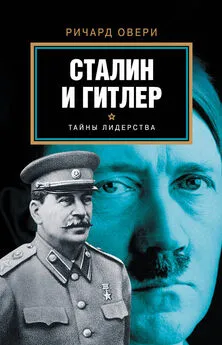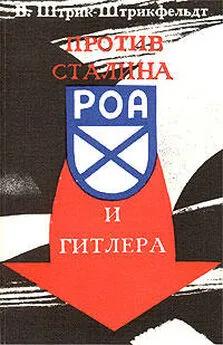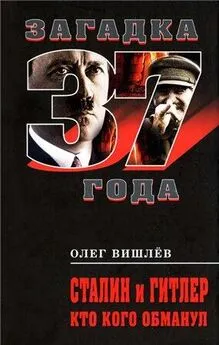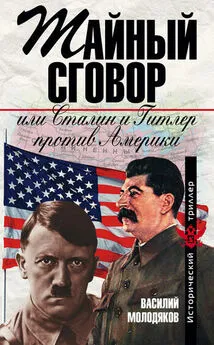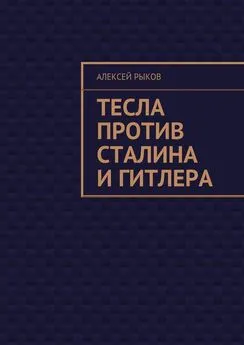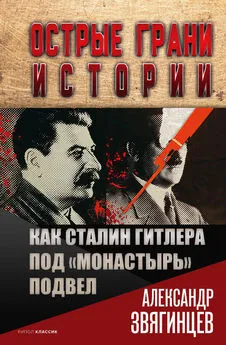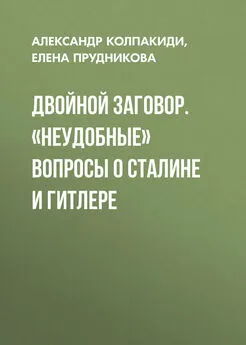Ричард Овери - Сталин и Гитлер
- Название:Сталин и Гитлер
- Автор:
- Жанр:
- Издательство:АСТ
- Год:2015
- Город:Москва
- ISBN:978-5-17-082961-3
- Рейтинг:
- Избранное:Добавить в избранное
-
Отзывы:
-
Ваша оценка:
Ричард Овери - Сталин и Гитлер краткое содержание
Что это были за личности?
Какими были методы их правления?
В чем мораль диктатуры как таковой и к чему она ведет?
На эти и другие наболевшие вопросы отвечает известный британский историк, автор крупных работ по истории Второй мировой войны Ричард Овери.
При сравнение и сопоставление двух режимов Овери рассматривает степень и характер народной поддержки, очаги противостояния и сопротивления, путь к власти каждого из диктаторов и процесс формирования культа личности и т. д.
Сталин и Гитлер - читать онлайн бесплатно полную версию (весь текст целиком)
Интервал:
Закладка:
39. Overy, ‘From “Uralbomber” to “Amerikabomber” ‘, pp. 155–7; A. Bagel-Bohlan Hitlers industrielle Kriegsvorbereitung im Dritten Reich 1936 bis 1939 (Koblenz, 1975), pp. 117–21.
40. J. Rohwer and M. Monakov Stalin’s Ocean-Going Fleet: Soviet Naval Strategy and Shipbuilding Programme 1935–1953 (London, 2001), pp. 54–62, 103, 229–56.
41. J. Dülffer Weimar, Hitler und die Marine: Reichspolitik und Flottenbau 1920–1939 (Düsseldorf, 1973), pp. 488–504; W. Deist The Wehrmacht and German Rearmament (London, 1981), pp. 82–4.
42. T. M. Nichols The Sacred Cause: Civil-Military Confl ict over Soviet National Security, 1917–1992 (Ithaca, NY, 1993), p. 50; A. van Ishoven Messerschmitt (London, 1975), pp. 115, 172.
43. IWM, FD 3056/49 ‘Statistical Material on the German Manpower Position’, 31, July 1945, Table 7, based on returns from Reichsgruppe Industrie to the statistical offi ce.
44. J. Gillingham ‘The “Deproletarianization” of German Society: Vocational Training in the Third Reich’, Journal of Social History, 19 (1985/6), pp. 427–8.
45. Samuelson, Plans for Stalin’s War Machine, pp. 191–5; N. S. Simonov ‘Mobpodgotovka: mobilisation planning in interwar industry’, in Barber and Harrison, Soviet Defence-Industry Complex, pp. 216–17.
46. J. Heyl ‘The Construction of the Westwall: an Example of National-Socialist Policy-making’, Central European History, 14 (1981), p. 72; R. E. Tarleton ‘What Really Happened to the Stalin Line?’, Journal of Slavic Military Studies, 6 (1993), pp. 21–61.
47. R. Absolon Die Wehrmacht im Dritten Reich: Band IV, 5 Februar 1938 bis 31 August 1939 (Boppard am Rhein, 1979),
pp. 9–11; see too IWM, EDS Mi 14/478 Heereswaffenamt ‘Die personelle Leistungsfähigkeit Deutschlands im Mob.-Fall’, March 1939.
48. Akten zur deutschen auswärtigen Politik, Ser D, vol. vi (Baden-Baden, 1956), p. 481.
49. Dunn, Hitler’s Nemesis, pp. 27, 29, 57; Simonov, ‘mobilisation planning’, pp. 211–215; D. M. Glantz Stumbling Colossus: The Red Army on the Eve of World War (Lawrence, Kans., 1998), pp. 100–101.
50. On Soviet manpower mobilization G. F. Krivosheev (ed.) Soviet Casualties and Combat Losses in the Twentieth Century (London, 1997), p. 91; B. V. Sokolov ‘The Cost of War: Human Losses for the USSR and Germany, 1939–45’, Journal of Slavic Military Studies, 9 (1996), p. 165.
51. H. Rauschning Germany’s Revolution of Destruction (London, 1938), p. 133.
52. Stone, Hammer and Rifl e, pp. 3–5; I. Getzler ‘Lenin’s Conception of Revolution as Civil War’, in I. D. Thatcher (ed.) Regime and Society in Twentieth-Century Russia (London, 1999), pp. 109–17.
53. The Military Writings and Speeches of Leon Trotsky (6 vols, London, 1981), vol. iii, pp. 56, 374–5; vol. v, pp. 24–5.
54. Stalin, Works, vol. xii, p. 189, ‘Concerning the policy of eliminating the kulaks as a class’, 21 January 1930.
55. L. Viola The Best Sons of the Fatherland: Workers in the Vanguard of Soviet Collectivization (New York, 1987), p. 62.
56. Viola, Best Sons of the Fatherland, p. 64.
57. R. Hanser Prelude to Terror: The Rise of Hitler 1919–1923 (London, 1970), pp. 266–71; in general see D. Schumann Politisches Gewalt in der Weimarer Republik 1919–1933 (Essen, 2001); B. Ziemann ‘Germany after the First World War – a Violent Society?’ Journal of Modern European History, 1 (2003), pp. 80–95.
58. R. Taylor Literature and Society in Germany 1918–1945 (Brighton, 1980), p. 119.
59. V. Berghahn Der Stahlhelm: Bund der Frontsoldaten 1918–1935 (Düsseldorf, 1966), pp. 275–7, 286; P. Longerich Die braunen Bataillone: Geschichte der SA (Munich, 1989), pp. 159, 184. On the ambiguity of this identifi cation with war see S. Kienitz ‘Der Krieg der Invaliden. Helden-Bilder und Männlichkeitskonstruktion nach dem Ersten Weltkrieg’, Militärgeschichtliche Zeitschrift, 60 (2001), pp. 367–402.
60. W. Wette ‘From Kellogg to Hitler (1928–1933). German Public Opinion Concerning the Rejection and Glorifi cation of War’, in W. Deist (ed.) The German Military in the Age of Total War (Oxford, 1985), p. 83.
61. T. Nevin Ernst Jünger and Germany: Into the Abyss 1914–1945 (London, 1997), p. 108; Wette, ‘From Kellogg to Hitler’, p. 85. See too G. Mosse Fallen Soldiers: Reshaping the Memory of the World Wars (Oxford, 1990), pp. 159–80; K. Theweleit Male Fantasies: Volume II. Male Bodies: psychoanalysing the white terror (Oxford, 1989), pp. 143–76.
62. Wette, ‘From Kellogg to Hitler’, pp. 88–9.
63. W. H. Chamberlin Russia’s Iron Age (London, 1934), p. 193–4.
64. J. W. Baird To Die for Germany: Heroes in the Nazi Pantheon (Bloom-ington, Ind., 1990), pp. 101–3.
65. Baird, To Die for Germany, p. 106.
66. F. J. Stephens Hitler Youth: History, Organisation, Uniforms, Insignia (London, 1973), pp. 5–7, 10–14, 37, 44–5; C. Schubert-Weller Hitler-Jugend: Vom ‘Jungsturm Adolf Hitler’ zur Staatsjugend des Dritten Reiches (Weinheim, 1993), pp. 165–88; L. Pine ‘Creating Conformity: the Training of Girls in the Bund Deutscher MädeV, European History Quarterly’, 33 (2003), pp. 371–5, 377–80.
67. W. Benz ‘Vom freiwilligen Arbeitsdienst zur Arbeitsdienstpfl icht’, Vierteljahrshefte für Zeitgeschichte, 16 (1968), pp. 317–46.
68. Bank of England, German fi les E8/56 204/8 C. A. Gunston ‘The German Labour Service’, The Old Lady, 10 (December, 1934), pp. 277–87.
69. A. E. Gorsuch ‘“NEP Be Damned”: Young Militants in the 1920s and the Culture of Civil War’, Russian Review, 56 (1997), pp. 566–8, 576.
70. Chamberlin, Russia’s Iron Age, pp. 200–202; Erickson, Soviet High Command, pp. 307–8.
71. J. W. Young Totalitarian Language: OrwelVs Newspeak and its Nazi and Communist Antecedents (Charlottesville, Va., 1991), p. 92.
72. Stephens, Hitler Youth, p. 5; on the idealization of the warrior see P. Reichel ‘Festival and Cult: Masculine and Militaristic
Mechanisms of National Socialism’, in J. A. Mangan (ed.) Shaping the Superman: Fascist Body as Political Icon – Aryan Fascism (London, 1999), pp. 153–67.
73. Getzler, ‘Lenin’s Conception of Revolution’, p. 109.
74. Military Writings of Leon Trotsky, vol. iii, p. 374.
75. Chamberlin, Russia’s Iron Age, p. 299.
76. M. Kipp ‘Militarisierung der Lehrlingsausbildung in der “Ordensburg der Arbeit”’, in U. Hermann and U. Nassen (eds) Formative Ästhetik im Nationalsozialismus (Weinheim, 1994), pp. 2.09, 216–17. See too O. Bartov ‘The Missing Years: German Workers, German Soldiers’, in D. Crew (ed.) Nazism and German Society, 1933–1945 (London, 1994), pp. 54–60; W. Wette ‘Ideologien, Propaganda und Innenpolitik als Voraussetzung der Kriegspolitik des Dritten Reiches’, in Deist et ai, Deutsche Reich und der Zweite Weltkrieg, pp. 152–4, 166–73.
77. L. Peiffer ‘“Soldatische Haltung in Auftreten und Sprache ist beim Turnunterricht selbstverständlich” – Die Militarisierung und
Disziplinierung des Schulsports’, in Hermann and Nassen, Formative Ästhetik in Nationalsozialismus, pp. 181–3.
78. Military Writings of Leon Trotsky, vol. v, p. 24.
79. S. Fitzpatrick Everyday Stalinism. Ordinary Life in Extraordinary Times: Soviet Russia in the 1930s (Oxford, 1999), p. 17.
80. K.-J. Müller Das Heer und Hitler. Armee und nationalsozialistisches Regime 1933–1940 (Stuttgart, 1969), p. 63.
81. P. Hayes ‘Kurt von Schleicher and Weimar Polities’, Journal of Modern History, 52 (1980), pp. 37–40 for Schleicher’s view of politics.
82. Erickson, Soviet High Command, pp. 316–17.
83. von Hagen, Soldiers in the Proletarian Dictatorship, pp. 206–9; Military Writings of Leon Trotsky, vol. v, p. 23.
84. Erickson, Soviet High Command, p. 309; von Hagen, Soldiers in the Proletarian Dictatorship, pp. 94–100, ch. 5 passim.
85. Bayer, Evolution of the Soviet General Staff, p. 162.
86. Samuelson, Plans for Stalin’s War Machine, pp. 108–9
87. E. O’Ballance The Red Army (London, 1964), pp. 116–18.
88. V. Rapaport and Y. Alexeev High Treason: Essays on the History of the Red Army, 1918–1938 (Durham, NC, 1985), p. 12.
89. H. J. Rautenberg ‘Drei dokumente zur Planung eines 300,000-Mann Friedenheeres aus dem Dezember 1933’, Militärgeschichtliche Mitteilungen, 22 (1977), pp. 103–39; M. Geyer ‘Das Zweite Rüstungsprogramm (1930–1934)’, Militärgeschichtliche Mitteilungen, 17 (1975), pp. 25–72; W. Bernhardt Die deutsche Aufrüstung 1934–1939 (Frankfurt am Main, 1969), pp. 72–4, 84.
90. Carroll, Design for Total War, pp. 91–2, 108–9, 12.
91. R. J. O’Neill The German Army and the Nazi Party, 1933–1939 (London, 1966), p. 87.
92. O’Neill, German Army, p. 90.
93. E. R. Hooton Phoenix Triumphant: the Rise and Rise of the Luftwaffe (London, 1994), pp. 94–9, 110–11; E. Homze Arming the Luftwaffe: the Reich Air Ministry and the German Aircraft Industry, 1919–39 (Lincoln, Nebr., 1976), pp. 51–60, 98–103; A. van Ishoven The Fall of an Eagle: the Life of Fighter Ace Ernst Udet (London, 1977), pp. 152–3, 161–2.
94. Bundesarchiv-Berlin, R2/21776–81, Reich fi nance ministry ‘Entwicklung der Ausgaben in der Rechnungsjahren 1934–1939’, 17 July 1939.
95. O’Neill, German Army, p. 115; A. W. Zoepf Wehrmacht zwischen Tradition und Ideologie: Der NS-Führungsoffi zier im Zweiten Weltkrieg (Frankfurt am Main, 1988), pp. 24–9.
96. O’Neill, German Army, pp. 119–20.
97. See on tensions between old and new elements M. Geyer Traditional Elites and National Socialist Leadership’, in C. Maier (ed.) The Rise of the Nazi Regime: New Perspectives (London, 1986), pp. 57–68; Deist et ai, Deutsches Reich und der Zweite Weltkrieg, pp. 500–17.
98. On army/SS relations O’Neill, German Army, pp. 143–52.
99. B. Wegner Hitlers politische Soldaten: die Waffen-SS 1933–1945 (Paderborn, 1992.), pp. 104–14.
100. Samuelson, Plans for Stalin’s War Machine, pp. 113–15. Offi cers continued to be investigated in the early 1930s, and party membership withdrawn. See F. Schauff ‘Company Choir of Terror: The Military Council of the 1930s – the Red Army Between the XVIIth and XVIIIth Party Congresses’, Journal of Slavic Military Studies, 12 (1999), pp. 136–7, 141–2.
101. Rapaport and Alexeev, High Treason, pp. 15–19.
102. Samuelson, Plans for Stalin’s War Machine, p. 114; Nichols, Sacred Cause, pp. 42–3.
103. D. Volkogonov Stalin: Triumph and Tragedy (London, 1991), p. 319; C.Andrew and O. Gordievsky KGB: the Inside Story (London, 1990), p. 106.
104. S. Main The Arrest and “Testimony” of Marshal of the Soviet Union M. N. Tukhachevsky (May – June 1937)’, Journal of Slavic Military Studies, 10 (1997), pp. 152–5.
105. V. Rogovin 1937: Stalin’s Year of Terror (Oak Park, Mich., 1998), pp. 470–82; see too L. Martens Un autre regard sur Staline (Brussels, 1994), pp. 185–90.
106. A. Resis (ed.) Molotov Remembers: Inside Kremlin Politics (Chicago, 1993), p. 280.
107. A. M. Nekrich Pariahs, Partners, Predators: German-Soviet Relations 1922–1941 (New York, 1997), pp. 88–9, 99–100.
108. Resis, Molotov Remembers, p. 275; Nekrich, Pariahs, Partners, p. 100; R. C. Nation Black Earth, Red Star: a History of Soviet Security Policy 1917–1991 (Ithaca, NY, 1992.), pp. 90, 96. Rykov also confi rmed a ‘plot’: see N. Leites and E. Bernant Rituals of Liquidation: the Case of the Moscow Trials (Glencoe, Ill., 1954), p. 317.
109. R. Reese Stalin’s Reluctant Soldiers: a Social History of the Red Army, 1925–1941 (Lawrence, Kans., 1996), pp. 134–46; N. M. Yakupov ‘Stalin and the Red Army’, Istoria SSSR, 5 (1991), pp. 170–2.
Читать дальшеИнтервал:
Закладка:
